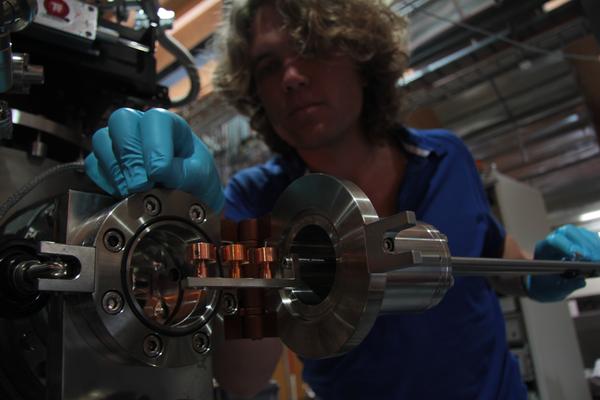Foundation Latsis International University EPFL Award 2015 – Hugo Dil

© 2015 EPFL
Influence of spin-orbit interaction (SOI) on the electronic structure of novel materials
« For his major contributions in the area of topological insulators, and in particular the identification of spin texture in topological surface states and the spin interference phenomenon.»
The design of a next generation of electronics is driven on the one hand by the reduction of power consumption and on the other hand by an enhancement of speed and flexibility. Both goals can be achieved in spintronics, using the so-called spin, or intrinsic magnetic moment, of the electron instead of its charge to transport and manipulate information. For every step forward new materials with novel electronic and spin properties are required.
Topological insulators are a peculiar example of this as they form a novel class of materials in itself. In the bulk they are semiconducting but at the interface to another material or to vacuum a metallic state is formed. The existence of this state is guaranteed by the topology of the electronic structure and it can’t be destroyed. Furthermore, these states have unique spin textures which make them a prime candidate for a non-magnetic spin filter. We identified such materials by their spin texture, studied how this phase develops over transitions, and how topological protection works on an atomic scale.
Another important spintronics component is the manipulation of the spin orientation. This can be achieved by Rashba systems where the Fermi surface consists of two concentric helically spin-polarised circles. We have been able to identify such a spin texture on the surface of a commonplace transparent material. As a bonus, this surface shows all the properties to serve as a 2D platform for the formation of Majorana quasiparticles, which are fermions that are their own anti-particle.
